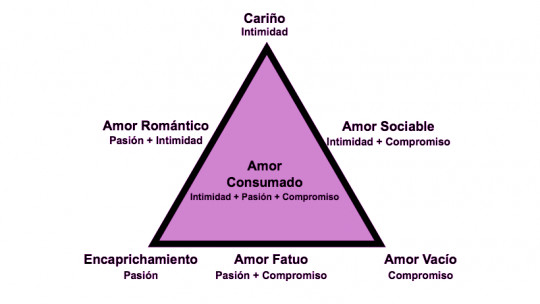Robert Winch was an American sociologist who in the 50s of the 20th century developed a theory known as “complementary needs theory” in order to explain the factors that influence the attraction between two people so that they could establish themselves as a romantic couple.
Robert Winch’s theory of complementary needs arose from a study of his in which he tried to investigate the ways in which complementarity occurred between the 25 couples who participated in the study. In it he determined that for two people to fall in love to the point of seeing each other as the ideal couple, they had to complement each other taking into account a series of factors that we will detail later.
What is the Complementary Needs Theory?
Robert Winch’s theory of complementary needs, located within the fields of sociology and social psychology and oriented towards the study of couple formation, was developed from a study that Winch carried out with 25 couples with the aim of investigate the ways in which complementarity occurred in the selection of partners
The first step in this process of selecting a potential partner is through appointments between both members, once they have previously arranged to make that appointment due to the initial attraction that may exist between them.
The next steps in forming a couple would be taken through a series of dates between both members over time that would facilitate falling in love between both being the step prior to establishing a romantic relationship.
Winch himself proposed that, in addition to dating being the previous step to falling in love, the most common way to meet that potential partner with whom we can have greater complementarity is for it to occur within the environments in which we usually move.
For this step to take place, according to the theory of complementarity A person chooses who they would like to be their partner by looking for someone who has needs that are complementary to their own ; Therefore, if each member of the potential couple saw in the other that there was complementarity with themselves, both would want to take the definitive step of forming a romantic couple.

In the development of the theory of complementary needs, Winch also observed that the people evaluated, in addition to choosing people who were complementary to them in terms of tastes, values and hobbies as a potential partner, also looked at other factors such as religion, race, social class, level of education, place of residence, etc. According to this theory, when these factors that we have just listed are common or at least quite similar, they make it easier for two people to become a couple.
In the theory of complementary needs, those people who fit within the complementary factors for a person have been classified as “field of eligible spouse candidates” one of these people could be someone we see on a daily basis (for example, the waiter at the cafeteria where we usually have coffee every morning, a classmate or co-worker, someone who goes to the same gym as us, etc. .).
The idea of opposite poles
It is quite common to hear the idea that “opposites attract”, being a topic that Robert Winch also investigated. While it is true that they can attract each other, this does not mean that it will last. Although we are not going to say that two people who are quite different cannot have a lasting relationship, since by both doing their part they could find some point in common and also There are other factors that may be more important for a relationship to work in the long term such as trust, support and mutual respect.
The same thing happens on the opposite side, and that is that although two people agree on most of the factors that they consider important to want to form a couple, it does not mean that success is guaranteed and as we well know, in the field of relationships there is no It is all jack, knight and king, but it is something much more complex and there are various factors that influence whether a relationship will work or not.
Regarding the idea that opposites attract, the theory of complementary needs says that It is complementarity that makes a relationship work, so that each member of the couple is the support of the other when they need it (for example, when one arrives in a bad mood after having had a hard day at work, the other can be there to calm them down, when a person is angry for some reason, their partner can be there to put the brakes on and help them think clearly before to act or that they can encourage each other).
As we can see, the theory of complementary needs It starts from an idea intermediate to that of the opposite poles and those that affirm that people who agree on everything will be successful as a couple ; That is to say, having certain tastes, values and even religion or social status helps two people show mutual interest, but it is also important that they complement each other, since if they agree on everything and do not find complementarity, it is possible that the relationship will not work. last as long as originally thought.
The theory of complementary needs states that it is this complementarity between two people that favors the strengthening of their ties as a couple, so in addition to the common factors being important for there to be an attraction between them, the differences that exist also play in their favor. have both, so that they serve to complement each other. And it is very common that a person feels attracted to another person who has traits different from their own (for example, a shy person who is attracted to another extroverted person and vice versa).
Some examples of people who could become a couple according to the theory of complementary needs would be the following: a secure person with an insecure person, a dreamy person with another who focuses more on the realistic side of things, a loving person and another who is colder, an insecure person with another who is more decisive, etc. That is to say, complementarity would occur, according to this theory, in personality factors or ways of acting, with prior common factors such as values, beliefs, etc.
Definitely, It is mutual feedback that can help a relationship work in the long term both members being allies in the sense that each member supports the concerns of the other and that the same thing happens the other way around, and this can be achieved through active listening, so that they know how they can support each other in the another, when necessary, and also knowing when the other person needs help to know how to act at all times in order to be able to provide that support.
Main factors that influence the attraction between two people
Now that we have seen broadly what the theory of complementary needs consists of, we are going to explain some important factors for mutual attraction to occur between two people according to various theories from the field of social psychology.
1. The similarity within the attraction between two people
Heider’s equilibrium theory states that Two people who are similar in various factors will feel more attracted to each other than to others with whom they have more differences than similarities establishing a principle of similarity according to which people who are similar can form a system that is balanced and in harmony, while the opposite could cause them psychological discomfort.
On the other hand, a large part of the research carried out in recent decades within the field of social psychology on the attraction between two people affirms that people tend to feel more attracted to others who are similar to them in terms of a series of characteristics. characteristics, attitudes, values and beliefs.
This statement made in social psychology would be a point that is in common with Winch’s theory of complementary needs, since this theory also stated that people tended to be attracted to others who were similar to them in terms of a series of factors, although they later differ in terms of different personality traits and way of being, this being what forms that complementarity that he spoke of in his theory.
2. Familiarity in the attraction between two people
According to some social psychological theories about interpersonal attraction, People tend to be more attracted to others who are familiar to them rather than others who are unfamiliar to us , this idea may also be supported by the effect of mere exposure. In addition, people tend to pay more attention to those who live closest to them, which favors the establishment of a sentimental bond.
In this sense, the theory of complementary needs also stated that a very important factor was the fact that both people will reside in the same locality or that at least their places of residence are not a considerable distance away.









